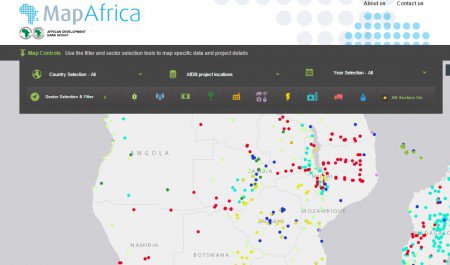IATI Standard 2.01: Enhancing data quality and ease of use for the African Development Bank
The Africa n Development Bank (AfDB) is one of fifteen organisations now using IATI Standard version 2.01 to publish their data. Version 2.01 was approved by the Steering Committee in October 2014 including changes to organisation identifiers, the number of mandatory fields and improvements to the reporting of free text fields.
n Development Bank (AfDB) is one of fifteen organisations now using IATI Standard version 2.01 to publish their data. Version 2.01 was approved by the Steering Committee in October 2014 including changes to organisation identifiers, the number of mandatory fields and improvements to the reporting of free text fields.
We asked Horia Sohir Debbiche, IATI and Aidflows Programme Coordinator at the AfDB, about their experience of implementing 2.01.
Why did AfDB decide to use version 2.01?
The AfDB has a long standing commitment to transparency, and this includes publishing to IATI. We are always striving to keep this commitment proactive, for example through being one of the first multilateral development banks to publish geolocation data. For AfDB, IATI is not only about reporting, but also making the data more comparable and user-friendly. The AfDB first published to IATI in June 2013 and we wanted to show that it was possible to progress and achieve results quickly. When version 2.01 became available the upgrade was a natural move, opening up new opportunities and enabling us to enhance the quality of our data.
What was the transition process like?
The process was quite easy, with clear steps to be followed: updating templates, adding new mapping, and deleting unnecessary elements. We used the IATI validator tool to make sure that we had covered all the issues, and were in regular consultation with the IATI technical team for advice and support.
What were the greatest challenges, and how did you overcome them?
One of the greatest challenges was to get all the team on board. To ensure this, we collaborated extensively with our IT team to ensure we all understood exactly what had to be added, deleted and reordered. Another more specific challenge for us was upgrading the geocoded data, as we were starting from version 1.03 for this part of the Standard. Again, support from Development Gateway and the IATI technical team allowed us to deal with more complicated issues.
Being amongst the first publishers to upgrade to version 2.01, we did face some challenges, as it was somewhat a journey of discovery. However, great collaboration both internally and externally allowed for a smooth process.
What would you say is the greatest advantage of this version compared to prior versions?
2.01 adds more rigour to the Standard and allows publishers to provide better quality data. Certain fields are now available that better contextualise and enrich the data, and using codes for some elements makes language more neutral. Overall this means that data is more comparable and, leading on from that, more user-friendly.
Do you have any advice for other publishers considering the transition to 2.01?
Transitioning to the new version is just part of the process of publishing to IATI. All the guidance is available online and the IATI technical team is always available to advise and look at your data. The IATI validator tool is also important, as you can check whether your data files are valid against the 2.01 schema. If you are currently publishing using versions 1.04 or 1.05, it is really just a matter of redefining the template you use and doing a new mapping to the updated standard.
As publishers of IATI data, we need to make data easier to use and compare for users. As a key step in enabling users to gain more from IATI data, all publishers should move towards upgrading to 2.01.
If you are interested in upgrading to version 2.01 of the IATI Standard and would like some support, get in touch with the IATI Technical Team [email protected]
